Philippe Decrauzat
Nowherenow
14.8. —
11.9.2005
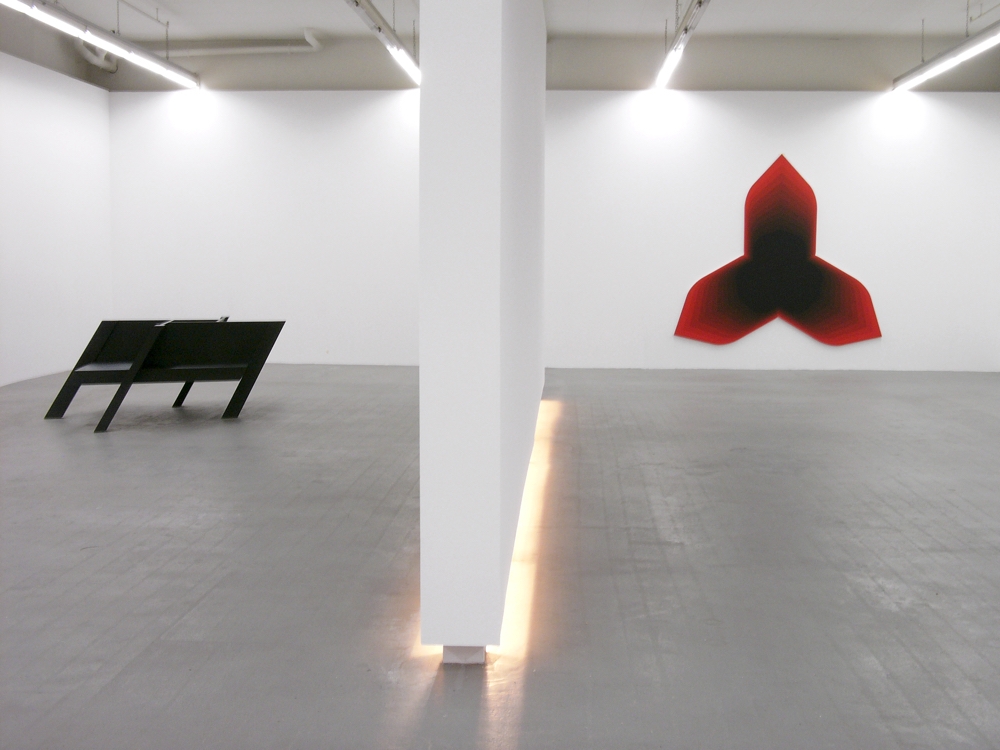
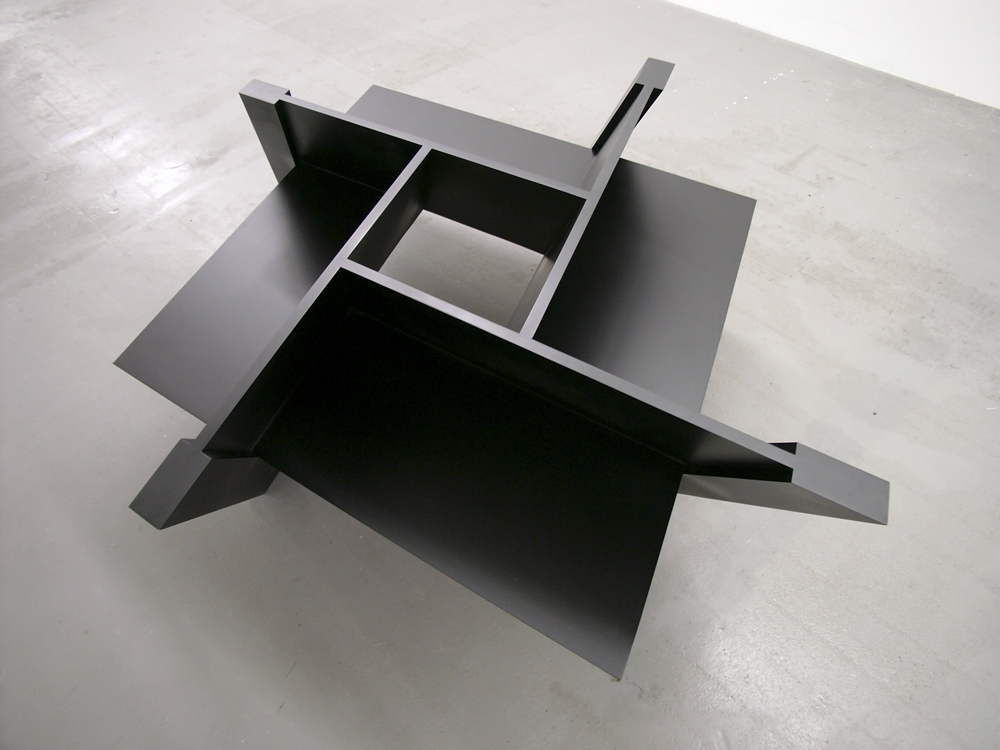
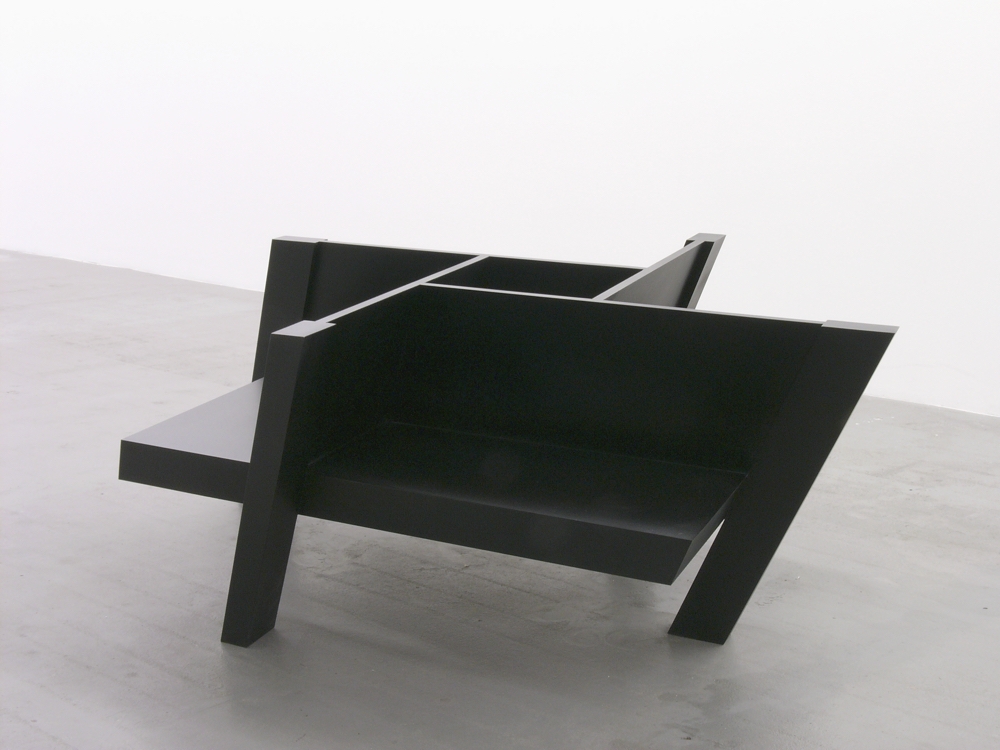
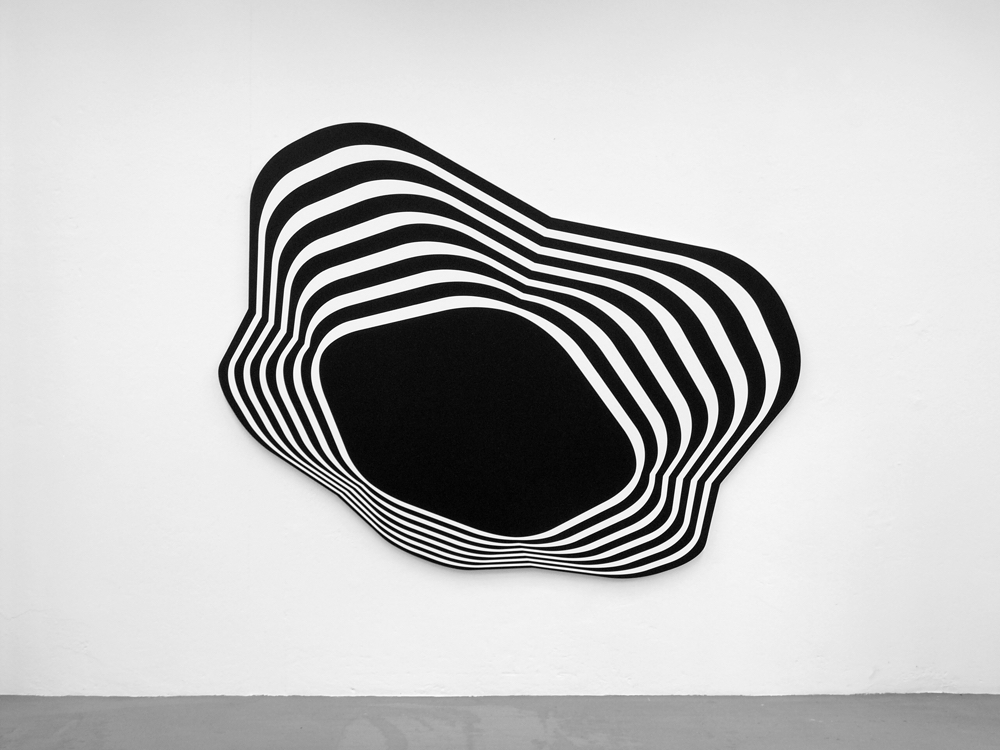
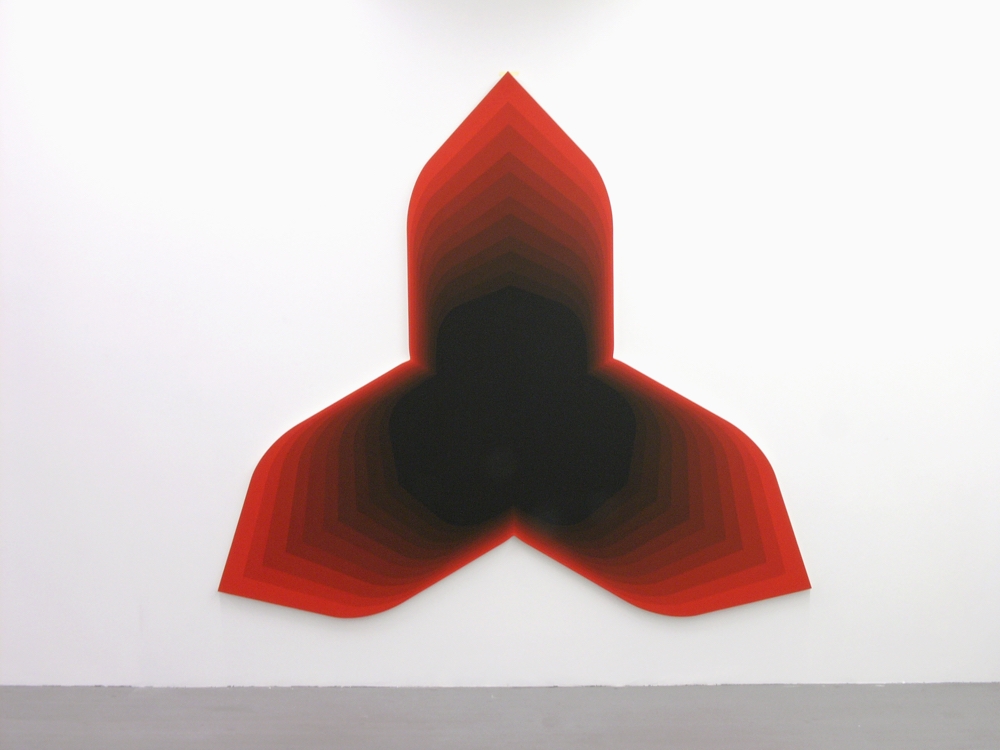
Philippe Decrauzat, who was born in 1974, lives in Lausanne, and is a founding member of Circuit, resorts to forms, motifs, and topics pertinent to the history of film, art, graphic design, architecture, literature, and music.
He doesn’t merely appropriate these elements but uses them to build up an expanded referential network. In his paintings on canvas and directly onto the wall, in his installations and objects there are only subtle traces of what has inspired him. However, these influences are an integral part of his works. In a mural painting designed especially for this exhibition — a geometrical composition of surfaces and lines extending towards different centers from which emerges a shell-like three-dimensional form — is reminiscent of Op Art or Stella’s geometrically abstract compositions. But Decrauzat has not geared this composition towards a specific work by Stella or Op Art but rather towards ‘general’ aspects inherent in his models. Frank Stella’s paintings are formal models from which Decrauzat is able to derive new forms and colors — formations that also include a three-dimensional component. What intrigues him about Op Art is its orientation towards the ‘objective’ and the disappearance of the author. For the exhibition Nowherenow, the artist has devised an installation that can be traced back to one of his posters depicting the first image of a scientifically observed pulsar (Pulsars are rotating neutron stars that are observable as sources of electromagnetic radiation. Source: wikipedia.org). The same image, incidentally, was used as a cover for the album Unknown Pleasures by Joy Division. Starting from this drawing, Decrauzat transforms the visual image into a pulsating light in space, thus marking a return to the originally observed pulsar. For another work Decrauzat uses a bench designed by Laszlo Moholy-Nagy for viewing artworks. Decrauzat has reconstituted it as an isometric three-dimensional shape challenging the viewer to perform twists and turns. The sign attached to the ground reading “Night”, together with the pulsating light installation, adds the element of time to the exhibition. Decrauzat’s fundamental attitude, according to which the history of abstract art abounds with examples of overlappings of various disciplines and intermingled high- and low-culture elements, features prominently in this exhibition.
Text from Sabine Schaschl